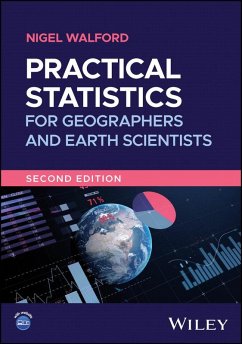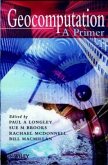A practice-oriented and accessible introduction to geographical statistics
In the newly revised Second Edition of Practical Statistics for Geographers and Earth Scientists, distinguished researcher Nigel Walford delivers an authoritative and easy-to-follow introduction to the principles and applications of statistical analysis in a geographical context. The book assists students in the development of competence in the statistical procedures necessary to conduct independent investigations, field-work, and related geographical research projects.
The book explains statistical techniques relevant to geographical, geospatial, earth, and environmental data. It employs graphics and mathematical notation for maximum clarity. Guidance is provided on how to formulate research questions to ensure that the correct data is collected for the chosen analysis method.
This new edition incorporates a new section on exploratory spatial analysis and spatial statistics. It also offers:
_ A thorough introduction to first principles in the statistical analysis of geographical data, including discussions of the quality, content, collection, and acquisition of geographical data
_ In-depth treatments of geographical data exploration, including the taking of statistical measures or quantities, as well as frequency distributions, probability, and hypotheses
_ Comprehensive explorations of testing times, including parametric and nonparametric tests
_ Insightful discussions of relationship investigation, including correlation and regression, as well as the spatial aspects of geographical data
Perfect for undergraduates pursuing a degree in geography, Practical Statistics for Geographers and Earth Scientists will also be a valuable tool for students in other earth and environmental sciences.
In the newly revised Second Edition of Practical Statistics for Geographers and Earth Scientists, distinguished researcher Nigel Walford delivers an authoritative and easy-to-follow introduction to the principles and applications of statistical analysis in a geographical context. The book assists students in the development of competence in the statistical procedures necessary to conduct independent investigations, field-work, and related geographical research projects.
The book explains statistical techniques relevant to geographical, geospatial, earth, and environmental data. It employs graphics and mathematical notation for maximum clarity. Guidance is provided on how to formulate research questions to ensure that the correct data is collected for the chosen analysis method.
This new edition incorporates a new section on exploratory spatial analysis and spatial statistics. It also offers:
_ A thorough introduction to first principles in the statistical analysis of geographical data, including discussions of the quality, content, collection, and acquisition of geographical data
_ In-depth treatments of geographical data exploration, including the taking of statistical measures or quantities, as well as frequency distributions, probability, and hypotheses
_ Comprehensive explorations of testing times, including parametric and nonparametric tests
_ Insightful discussions of relationship investigation, including correlation and regression, as well as the spatial aspects of geographical data
Perfect for undergraduates pursuing a degree in geography, Practical Statistics for Geographers and Earth Scientists will also be a valuable tool for students in other earth and environmental sciences.








